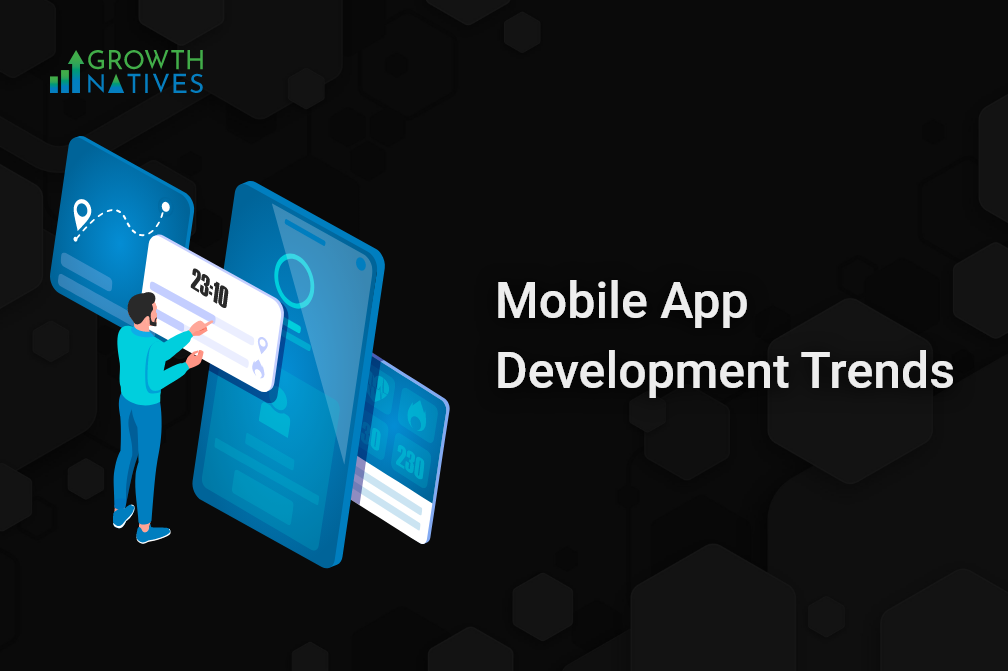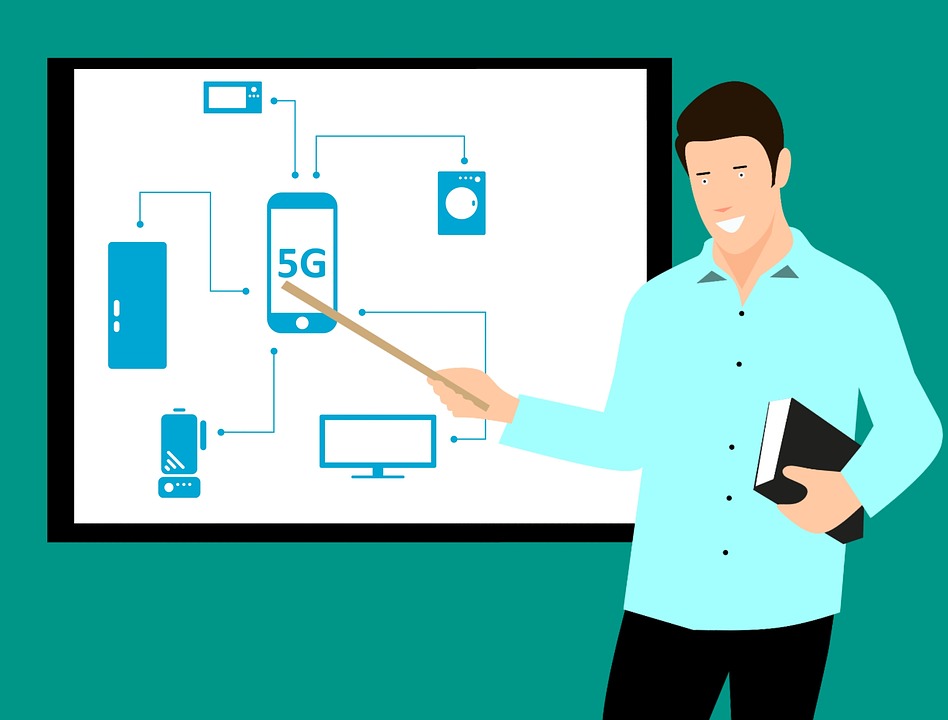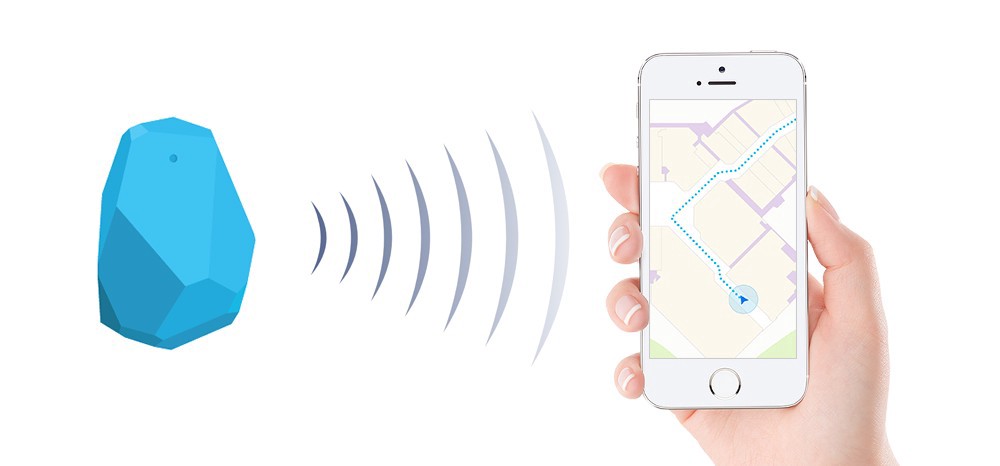
Top 9 Mobile App Development Trends for 2022
By Sakshi Arora
Jan 29, 20227 min read
As of Q1 2021, Google Play Store and Apple App Store were the first and second-largest app stores with 3.48 million and 2.22 mobile apps, respectively. However, a report by App Annie shows that an average mobile user uses about 10 mobile apps per day.
What does it imply?
The mobile app development industry has become a playground for various approaches and methods. Thousands of apps get developed every year, but only a handful actually succeed in making some serious money.
Have you wondered why?
The reason is quite obvious; apps that follow old-school development practices don't survive long in the market because the cutting-edge digital world demands an app that can keep up with the recent trends.
Your users want great-looking apps, fast load times, and snappy response times. If you are unable to deliver this experience, you can bid goodbye to their business. This means you need to keep your finger on the pulse of technology at all times. To ensure that your app checks all of these boxes, you must be aware of the current technology, user behavior, and market trends, as well as how those trends are changing.
If you are new to the world of the mobile app development industry, or due to reasons beyond your control, unable to stay on top of the changing trends and the latest fad, then this blog is catered for you. It will give you insights into the future of this ever-growing technology, unveiling how this industry has evolved over time and how it keeps on reinventing itself as we speak.
Top Mobile App Development Trends
1. 5G Technology
The worldwide 5G technology market is expected to reach $620.72 billion by 2030.
While 4G was designed to allow information to be shared at higher speeds than 3G, moving forward, 5G will lead to an entirely new set of technological possibilities across every sector.

5G networks focus on the upcoming technology that provides the opportunity to develop innovative applications and services with a high level of network efficiency, traffic, and data capacity. This indicates significant opportunities for companies to improve their businesses and create new ones.
Currently, several giant tech firms are mobilizing the technology and leading service providers are developing it.
2. Beacon Technology
Many people are familiar with beacon technology, and a variety of businesses, including healthcare, eCommerce, museums, and hotels have been utilizing it. However, it is not often employed in mobile app development. It has been gaining popularity in the mobile business for a few years, and it appears to be on the rise in 2022.
It is possible to connect the internet and offline worlds using beacon technology. By understanding how customers engage with mobile apps, businesses are on the verge of linking the devices and applications that can work smoothly for their customers.

The common mobile beacon technology to witness are AI-enabled chips, mobile payments beacons, AI and ML automated implications. The technology is used to track user behavior, detecting the total time a customer spent viewing a product or service.
3. Augmented Reality/Virtual Reality (AR/VR)
The global AR and VR market is anticipated to reach close to 300 billion U.S. dollars by 2024.
Augmented reality (AR) and virtual reality (VR) have been around for a longer time than you know, albeit in a more basic form. Computer-generated images, given the look and feel of reality, were used to create realistic backgrounds for film scenes, video games, and even educational programs.
However, ever since smartphones got bundled with cameras and powerful computer chips, AR/VR started making waves as a popular interactive app experience. Apple, Google, and Meta are all bringing AR and VR technologies to the market. In Google Maps, Google included a feature called "Live View," which allows users to view the direction in real-time on real-world photos.
4. Artificial Intelligence and Machine Learning
Artificial intelligence (AI) and machine learning have profoundly changed the IT sector, particularly mobile applications, taking it to new heights.

Delivering customized user experiences through a mobile app is difficult. Creating an attractive app design and engaging content is not enough. Using an AI-enabled analytics solution pivots the way businesses provide value to users by knowing how, when, where, and why they interact with a mobile app. Predictive analytics and machine learning algorithms are two key technologies that can support personalized mobile experiences for applications.
New services can be developed using AI techniques that help users navigate apps more easily, interact with their devices easily and quickly, deal with unfriendly interfaces, or interact with the device in new and different input modes.
5. Mobile Commerce
Mobile commerce is the critical element to watch out for in 2022, and no list of mobile app trends would be complete without addressing it. It is a trend that will bring about a shift in mobile app solutions in 2022, as it has been prospering since 2020.
For mobile app resellers, mobile commerce capabilities are a must-have feature when pitching clients. In 2022, mobile commerce is anticipated to grow to up to $22 billion, as several B2B and B2C companies have observed an upsurge in engagement, revenue, and conversion rates.
6. Cloud-Based Applications
Every organization seeks efficient infrastructure and hybrid solutions. Although cloud computing integration is not new, it has yet to attain its full potential.
Instead of keeping information on the user's smart devices, apps may store data and perform complicated operations. As a result, you can have increased space and enhanced convenience, henceforth saving money and time for development operations.
7. Mobile Wallet
PayPal, Google Pay, Apple Pay, and Samsung Pay – Did it ring a bell? All of these are examples of mobile wallets. A virtual wallet created to make your life easy, without engaging in the trouble to carry around wallets or credit cards.

Moreover, with the present scenario, contactless payments is a need, and mobile wallets play a huge role in making these attempts successful.
8. Blockchain
Over 70 million blockchain wallets have been created, with mobile wallets being the most popular.
Blockchain caught our eyes because of cryptocurrencies. Certainly, it is best known as the technology behind bitcoin. In fact, it's a lot more than that and blockchain development is one of the biggest changes in the financial system since the internet was created in the early 1990s.
In addition, currency converters that utilize the blockchain to store digital assets, secure digital identities, and keep track of loyalty programs are becoming more common. Intelligent contracts, anti-piracy software, tools to control elections, and Blockchain as a service (BaaS) platforms are expected to become increasingly prevalent in 2022 and beyond.
9. Foldable Phones
Not all, but at least some of us have had the pleasure of using flip phones back in the time launched by Motorola. The smartphone revolution took over the essence of these flip phones brought to the table. But certainly, these foldable gadgets have taken over the market yet again, with mobile phones switching from touch displays to GPS functionality and only one or no buttons.
When it comes to innovation, foldable gadgets have made a comeback in the mobile industry. The idea is that an app should be adaptable and change its presentation fluidly when the screen folds or unfolds.
Final Thoughts
The above-listed mobile app development trends provide a comprehensive outlook on how 2022 will turn out and what trends you should be watching for. Growth Natives can help you in building mobile apps based on these upcoming marketing trends with ease and expertise. Connect with our experts at info@growthnatives.com or visit us here.



